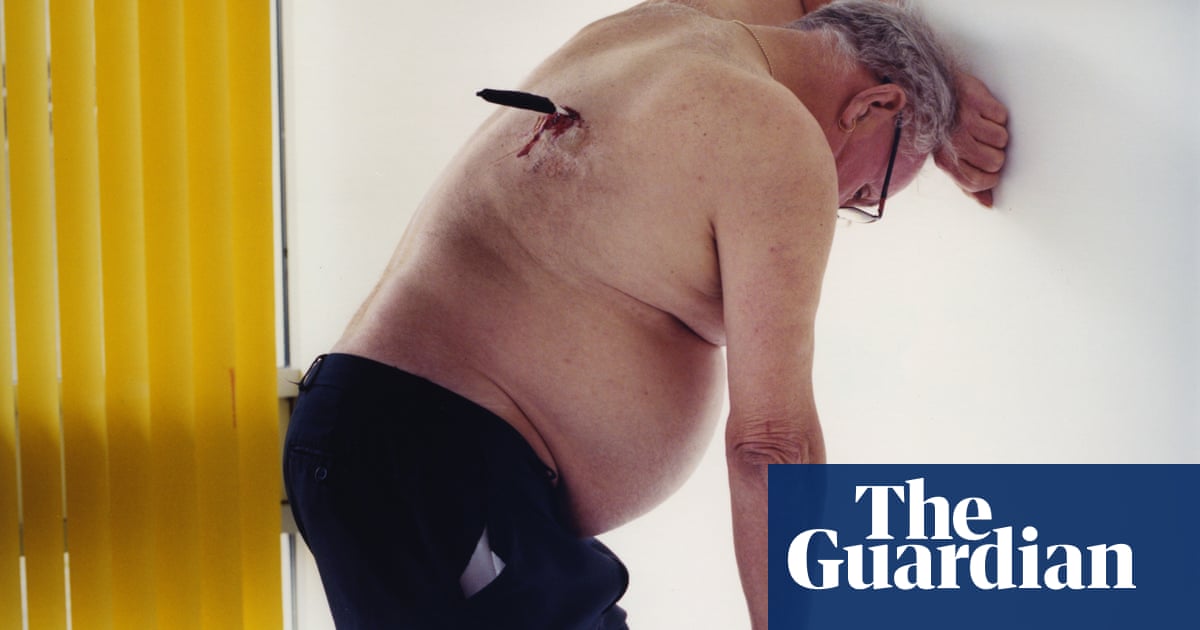
By the time I arrived in Sarajevo in June 1992, I had already spent some time documenting the end of the cold war, shooting the Romanian revolution and the fall of the Berlin Wall. When rumours began to circulate that something was going to happen in Bosnia, no one could believe it. The country seemed integrated: a war would mean people literally fighting their neighbours.
Many of us covering the siege of Sarajevo initially believed, perhaps naively, that telling the story loud enough, well enough and honestly enough would lead to condemnation and intervention from the international community. There was a sense of incredulity that this could be happening in a European capital city. I don’t think any of us would have thought the blockade would still be in place three years later.
During those years, I made about 10 visits. In my first couple of weeks, I concentrated on the siege itself: casualties, patients in hospital, bodies in the morgue. Later, I became preoccupied with what happens to ordinary, educated, cultured people when they’re reduced to the medieval conditions caused by a siege.
Sarajevans had little in the way of weapons, while food, water and electricity were often in short supply, but they were incredibly adaptable and tried to live as normally as they could. They would not give up things they wanted to do, such as meeting friends in the city centre. One of my photographs, taken a year in, shows a woman’s feet under a shroud in the morgue. Her toenails were painted, which seemed like a small act of resistance.
A vibrant and important cultural life began to emerge – and that was my focus. I became friends with actors and artists, including a painter who alternated between working in his studio and fighting on the frontline. He even made a sketch, a plan for a network of trenches, in the shape of Piet Mondrian’s Broadway Boogie Woogie. Art and culture were seen as central to the defence of Sarajevo. It wasn’t just the physical city that was being defended, it was the concept of the city – what it is to be a citizen and part of society.
People would risk their lives for a little pleasure. And it could be very hard on kids, who obviously didn’t want to be stuck indoors. During quieter periods, they were able to go outside more – I took a picture of children swimming in the river during a ceasefire. But the river, like so much of the city, was clearly visible to Serbian snipers. One winter, I attended an awful scene: a group of five or six children had been killed by a shell while sledging in front of their house.
This picture of a child with a ball was taken while I was out walking in the beautiful late afternoon winter light. I just happened upon the scene, capturing the ball being thrown up in the air as if this was any street in the world. It’s such an ordinary thing for a kid to do, but it’s happening against the backdrop of the tank trap, a hint of the ever-present danger.
Today, I split my time between the UK and Sarajevo. My wife is from the city and I have friends here. I recently held an exhibition in the rebuilt Vijećnica, the Sarajevo town hall that was razed in 1992. One photograph showed a string quartet playing in its ruins during the siege. I hung the image where it was taken, with the building restored to its former glory.
Paul Lowe’s books include Photography Masterclass; Understanding Photojournalism, with Dr Jenny Good; and Reporting the Siege of Sarajevo, with Kenneth Morrison.
Paul Lowe’s CV
Born: London, 1963.
Trained: BA in history, Cambridge University. BTec in documentary photography, Gwent College of Higher Education. PhD in photography, University of the Arts London.
Influences: “Rembrandt, Robert Frank, Lee Friedlander, Garry Winogrand, Tony Ray Jones, Gilles Peress.”
High point: “Documenting the extraordinary resilience of the citizens of Sarajevo as they defended their city not just with guns on the frontlines but with culture and art. Their incredible courage, humour and creativity was inspiring.”
Low point: “The fact that, despite all of our coverage of the atrocities taking place in Bosnia, the international community failed to intervene, and it took the massacre of 8,000 men and children in Srebrenica to force their hand. And then, to watch the same unfolding in Ukraine today.”
Top tip. “Let your subject breathe, let the situation unfold. And think about how the aesthetic choices you make contribute to the meaning of your photograph.”












